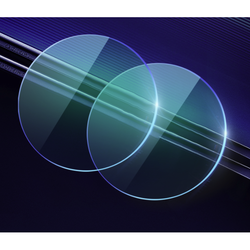How to Choose The Lenses For Yourself
When comparing lenses, there are several factors to consider.
Refractive index: The refractive index of a material determines how much it bends light, and higher refractive indices generally mean thinner, lighter lenses. For example, lenses made of materials like high-index plastic or glass have higher refractive indices than lenses made of standard plastic.
Abbe value: The Abbe value of a material determines how much chromatic aberration it produces, with lower Abbe values leading to more color distortion. Therefore, lenses with higher Abbe values are generally preferred.
Impact resistance: Some materials, such as polycarbonate, are more impact-resistant than others, making them a better choice for certain activities or professions.
Scratch resistance: Certain coatings or materials, such as tempered glass, may provide better scratch resistance.
Cost: Different lens materials can vary greatly in cost, so it's important to consider your budget.
Refractive index: The refractive index of a material determines how much it bends light, and higher refractive indices generally mean thinner, lighter lenses. For example, lenses made of materials like high-index plastic or glass have higher refractive indices than lenses made of standard plastic.
Abbe value: The Abbe value of a material determines how much chromatic aberration it produces, with lower Abbe values leading to more color distortion. Therefore, lenses with higher Abbe values are generally preferred.
Impact resistance: Some materials, such as polycarbonate, are more impact-resistant than others, making them a better choice for certain activities or professions.
Scratch resistance: Certain coatings or materials, such as tempered glass, may provide better scratch resistance.
Cost: Different lens materials can vary greatly in cost, so it's important to consider your budget.
Ultimately, the best lens material for you will depend on your specific needs and preferences. You should consult with an optometrist or ophthalmologist to determine the best lens material for your prescription, lifestyle, and budget.




